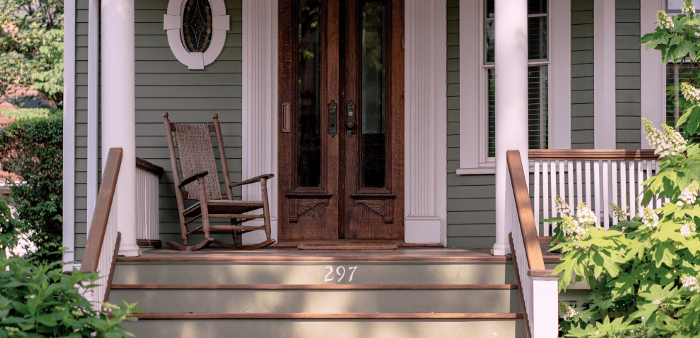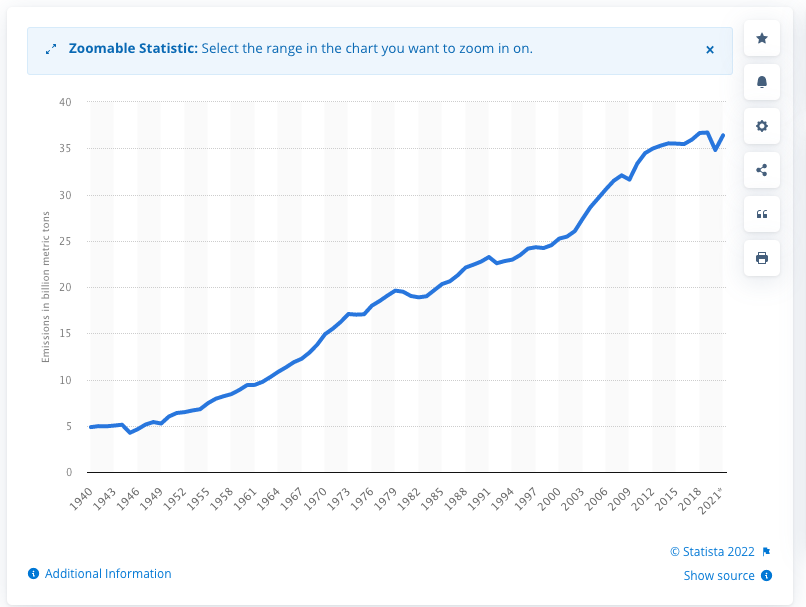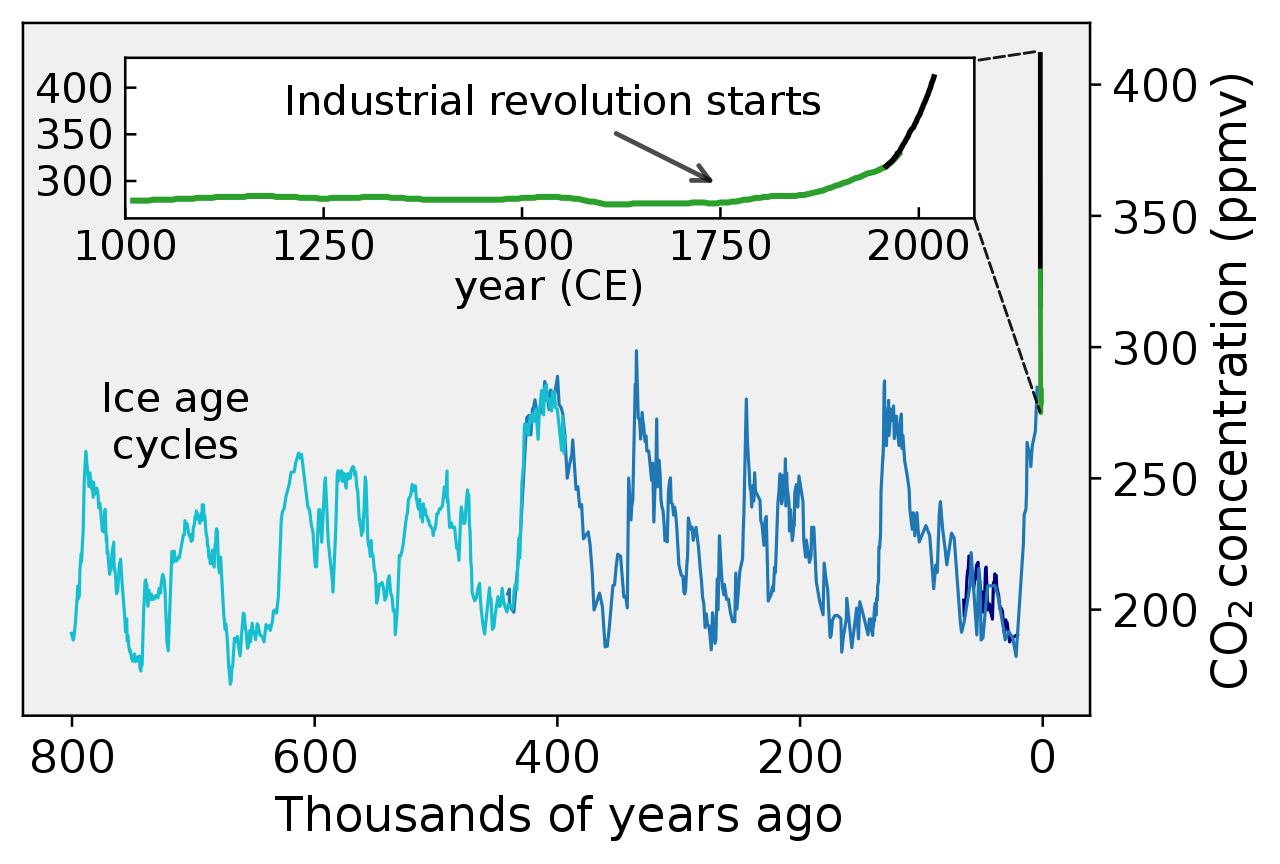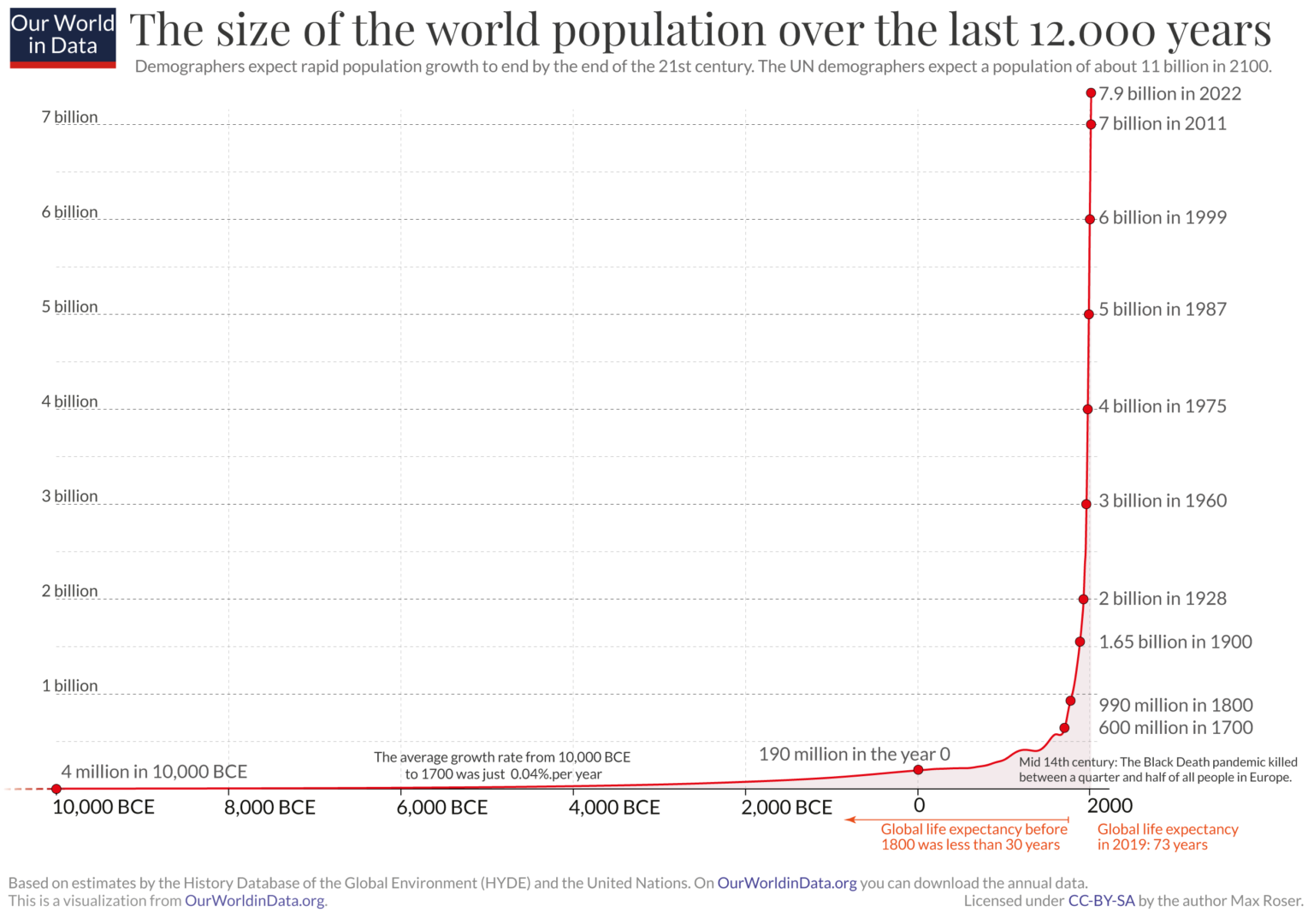The Front Porch Will Save The World

I realize that sometimes article titles have a tendency to be reductive, not fully communicating the meat and potatoes of the script it sits above. This one is no exception, as planet-saving is no small feat. Perhaps this particular title is not only reductive but even clickbait-y, and if so, accept my humble apologies along with my thanks. My goal is neither to mislead you nor to sell you a bill of goods but to capture something that is quite complicated, and demonstrate how it is, in fact, quite simple.
In marketing, it's understood that you have to say something novel or bold if you are going to capture your audience's attention and persuade them to take action. It’s also important that your message doesn’t require the audience to process and retain too much detail. People are more likely to forget or not absorb the concept. The key is to have simple messaging that narrows in on a minimal point that sticks so that the audience has something with which to associate any other details.
Obviously, the United Dairy Farmers Association is not naive to this fact. In the 80s, when they wanted to convince people to consume more dairy, they didn’t spend too much time talking about all the health benefits in great detail which may be over one’s head, or perhaps not particularly meaningful to many. They didn’t talk much about various ways that dairy products can be added into one’s diet, such as through yogurt, cheeses, and so on. They focused on one product and one simple message:
Everything that surrounded this formed the guts of the message, but it was summarized into something very simple–Milk is essential for your health. That simple message helped people to act, even though the validity of the milk message is highly debated. Through frequency and consistency of messaging interrupting every episode of Matlock or reruns of the Munsters, the dairy industry was able to convince us that if we didn’t drown kids in milk from an early age, that their bones would just crumble the minute they look cross-eyed at a skateboard. People who already drank milk were convinced that it was essential for children to drink milk in large quantities, as though it was the only dietary source for enough calcium to meet a child’s developmental needs. If you didn’t get your kids enough milk, they would more likely be kidnapped, and the milk carton alerted you of that concern too. You were either going to consume what’s in a milk carton or you were going to be on a milk carton.
It was these marketing principles that came to mind when I was thinking about how to solve our global climate change crisis. Climate change is a real issue, but it is also a complex one. It took Al Gore a whole 1 hour and 36 minute documentary to explain climate change to Rush Limbaugh in the mid 90s and he still didn’t get it. Even convincing a few people he invented the internet was more successful than that. Global warming (which is now called climate change to throw its critics off in the wintertime) is far more complex, and widespread than probably any challenge humanity has yet faced. While the problem is no doubt, very complicated, the most effective solution is the one that focuses on a very simple idea.
Let's think about the challenge of climate change for a moment. Here’s the problem we have at hand:
- The average temperature of the earth is increasing.
- Human actions are a significant cause.
- The data on this is objective and reliable.
- Some people still don’t believe in climate change.
Unlike the dairy industry's claim about the health benefits of drinking milk, climate change scientists have volumes of data to back up theirs. To share only a couple of the data points, over the last 140 years, the earth's average temperature has been steadily increasing, alongside the increase of atmospheric carbon dioxide. In fact, this increase aligns with a steady and unprecedented spike in human-induced carbon emissions since the Industrial Revolution.


Yet, climate change deniers are not in short supply. It's even more unfortunate that climate change becomes a matter of identity politics. For some reason, it’s not cool to support conservative economic policies, be pro-life and also believe in the reality of climate change at the same time. The status of our surroundings and the well-being of our land is subject to us versus their political ideologies. Cable news networks stoke the flames of the disputes between the two major points of view, pushing a zero-sum narrative. As a result, problems don’t get solved.
Climate implications are at play in more ways than we tend to recognize. I’ll mention just a few. TLDR? Feel free to skip ahead to child-rearing.
Transportation:
In the early years of climate change being a public topic, and not just a hypothesis discussed amongst scientists, what most people talked about is the impact that the exhaust from our cars has on the air we breathe. In the USA, most families have two cars, and it is a right of passage to get your license at 16 years old, and get a car of your own, so families have a car for each adult individual in the family. We drive everywhere. Over the last 20 years, the number of cars on the road has increased dramatically. Cars are better than they were 20 years ago, but they still predominantly run on gas, and as with every fuel that is burned, they release carbon into the air.
Land Development:
There are several species of creatures on the earth that develop land and build structures. Beavers build structures to create a shelter out of founding lumber which they have hewn into shapes with their teeth. Ants work in large groups to build large mounds with sophisticated tunnels. Then there are humans. We dig big holes in the ground, pour concrete, build wood frames, and slap bricks on one side and drywall on the other to form large shelters capable of holding all our stuff. We’re certain to surround these shelters with lots of grass so we can cut it weekly, and then we add pools and fire pits and dedicated furniture to make it more fun to stare at the grass we just cut. Also, it is likely that every time someone grows up, they will probably build or buy one of these shelters and immediately start painting it. In our structures, we’ve added an extension to hold our cars, so that we can shelter those as well.
Industrial Investments:
Because of all the space in our homes, we want to put lots of stuff in them, so we sign up for an Amazon Prime membership so we can ship lots of stuff to our homes some of which we keep, and some of which we throw away in large trash cans because someone will come and take it to a dump for us, seemingly in perpetuity. Since we have such nice homes and have to buy lots of stuff, we have to make sure we get good jobs, most likely a ways away from our homes because there are no good jobs close by. Because of this, businesses need to keep expanding to produce more products and shelter all the drivers that drive there to work.
Agriculture:
People love eating things that make them happy or at least full, and of course, this includes meat. To eat meat you have to hunt an animal in the wild. If that is not an option or is impractical, you will need to have some land to farm raise, feed, slaughter, and butcher the animal and possibly package and ship it to various people willing to drive to a job in order to pay you for this meat. Because so many people love meat (obvi vegans don’t count here), more and more people means more and more meat, and that means more and more farmland, and the tax policy and other costs mean more and more efficiency is being sought which in some cases means maximizing the meat output per square foot of land by packing what would normally be a grazing animal into a small area with the cheapest feed dosed to them. Modern agriculture has migrated away from healthy animal and land ecosystems, toward more industrial methods for maximum output.
Tax Policy:
Taxes exist to fund governments, which in some cases is funding services like building roads, prosecuting people who possess marijuana and managing a foster program for their displaced children. That’s not a comprehensive list of course, but you get it. Governments need to collect taxes to fund all of these things, and ultimately, people and businesses are making decisions that are most advantageous to them, which involves a certain amount of avoiding taxes. For this reason, the government is able to create tax policies that incentivize certain activities like investing in job creation, building buildings that attract people with cars to drive into a certain area to buy products, or creating new ways to improve the environment. When it comes to climate change, policies have the potential of encouraging people to do something like make and drive more cars and discourage people to do something like using different forms of energy or establishing more sustainable farm practices. Incentives will never go away. It is simply where the incentives are placed that matters.
Child Rearing:
When two people love each other, they seem to want to make another person. Some people would like to make two or three more persons. In some more rare cases, people will make upwards of 12 kids (as was the case for my parents and more for the Duggars). This has a few implications, the first of which is that those parents' lives are going to be centered around their kids for 18 years and the second is that each one of those people is most likely going to be driving a car at some point, but also they will be eating steak, buying a home (cutting grass), buying products from industry, arguing about taxes, and so on.
About on hundred years ago, there were about 2 billion people on the earth, and today there are close to 8 billion. Take a look at this illustration of the population growth of the earth over time.


The population of the earth has just hockey sticked (hockey stuck?) in the last century. Because of all the above-mentioned factors, we are consuming more energy, digging up more land, and releasing more gas than ever before. We’re cutting down more of what feeds the air, and creating more of what burns the air. Our consumption habits including the number of cars per household have changed substantially.
One of the things that you will notice that has changed over time is the way homes are built. The typical 1920s home might have been a bungalow with a big porch swing, and not much in the way of parking. The 1960s had a modern ranch with a garage or carport and a nice stretch of sitting space on the front. Through time, houses have evolved the meet the demands and preferences of people as tastes have changed.
Today, we have a lot of cars, and our lives are often built around driving places. Driving to work, driving to the mall, driving to meet a friend for coffee, driving to the grocery, driving to go out to dinner, and so on. We also work more hours to buy more things and accumulate material possessions. Also, getting free delivery is an important pastime. We now have bigger homes with larger garages and to accommodate those changes, we have fewer front porches. For the average middle-class home, the most prominent feature is the garage, and the trade-off is often little or no front porch.
The typical behavior in the suburbs is to drive cars, push a button to open the garage door, park and then push the button again to close the door, go inside and watch TV to unwind from the stress of the long work day, and connect with friends virtually through social media. Because of that, it is common that we are less connected physically, including to our own local community.
In the 20s, people would sit on their porches and congregate with the people in their neighborhood. This meant less driving, more trust amongst local people, and less need for extra products to keep us entertained.
Here’s an anecdote: Before the pandemic, we knew none of our neighbors well, and certainly didn’t spend any time with them on a regular basis. When COVID concerns began to rise, and more people were staying home, people began to spend more time outside because they were not getting out as much by going to restaurants or working at an office. At some point, people started saying hello to each other. People were talking more, and ultimately we saw a group of close friends formed. As a result, we are going to fewer restaurants, we are driving less, spending more time borrowing each other’s resources, and experiencing more social connectedness.
The reason why this didn’t happen before is mostly because of natural occurrences. We live in a modern neighborhood where there are few front porches, and where there are some, they are very small. When people do sit outdoors, they sit in the back, where people are unlikely to run into each other. People are busy working out of the home enough, for long hours at high-demand jobs, so there is little reason to change that. The Pandemic has forced change.
To cope with the isolation or to mitigate risks, lots of people have changed their behaviors to being outdoors more, staying more local, and sitting on their driveways. I have heard several stories about people increasing their connection to their immediate community, and connecting more with their neighbors.
Since March of last year, the measurable carbon emissions have decreased.
Admittedly, this is like losing weight by getting sick–it's not a solution, but we can learn from it. Because people are interacting with each other, and building community. A byproduct is better mental health, more eating at home, and therefore a likelihood of healthier foods resulting in better overall physical wellness, and a lower carbon footprint. If you don’t know your neighbors now, after the life changes that many experienced during the Covid-19 pandemic, you probably won’t. There are too many things making it easier not to talk to them, and for that reason, you are spending more time hanging out elsewhere. If we build more front porches, it will create opportunities to connect with people, invite people in, cook for them and share a beverage in the evening.
This culture of sitting on the front porch will only grow in demand in larger areas as more people know each other. Communities will become more knit together through those connections, and there will be more gatherings in neighborhoods or town centers for reasons other than just dining out, or watching movies. People will connect with each other and feel safer. People will build playgrounds and parks instead of garages. They will share ideas, hear other points of view and develop solutions to various social issues, or maybe they will help a neighbor out when needed.
If we build more front porches, people will sit together. And that may be good for the planet, but I'm sure it good for the people that live on it.
